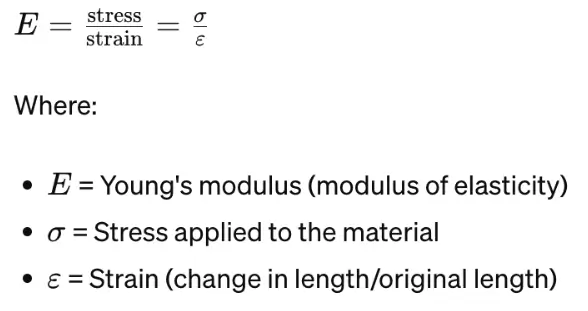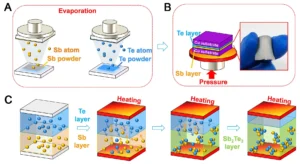In the realm of material science and engineering, understanding how materials respond to stress and strain is paramount. Young’s modulus, also known as the modulus of elasticity, plays a fundamental role in characterising the behaviour of materials under tension or compression. This article delves into the intricacies of Young’s modulus, exploring its definition, significance, applications, and implications across various industries.
What is Young's Modulus?
Young’s modulus, denoted by the symbol E, is a mechanical property that quantifies the stiffness or elasticity of a material. Named after the British scientist Thomas Young, who introduced the concept in the early 19th century, Young’s modulus measures the ratio of stress (force per unit area) to strain (relative deformation) in a material under tension or compression within its elastic limit.
Mathematically, Young’s modulus is expressed as:

The SI unit of Young’s modulus is pascals (Pa), but it is often expressed in gigapascals (GPa) or megapascals (MPa) for convenience, especially in engineering contexts.
Significance of Young's Modulus:
Young’s modulus provides crucial insights into how materials respond to external forces and their ability to return to their original shape after deformation. A high Young’s modulus indicates a stiff material that experiences minimal deformation under stress, whereas a low Young’s modulus signifies a more flexible material that deforms readily.
Applications of Young's Modulus:
- Structural Engineering: Young’s modulus helps engineers select appropriate materials for building structures like bridges, buildings, and dams. Materials with high Young’s modulus, such as steel and concrete, are preferred for load-bearing components to ensure structural stability and integrity.
- Aerospace Industry: In aerospace applications, where weight reduction and performance optimisation are critical, Young’s modulus plays a vital role in the selection of materials for aircraft components. Lightweight materials with high Young’s modulus, such as carbon fibre composites, are favoured to enhance fuel efficiency and structural strength.
- Material Testing: Young’s modulus serves as a benchmark for quality control and material testing processes. It helps manufacturers assess the mechanical properties of materials and ensure they meet the desired specifications for various applications.
- Biomechanics: In the field of biomechanics, Young’s modulus aids in understanding the mechanical behaviour of biological tissues and biomaterials. It is particularly valuable in prosthetics, orthopaedics, and tissue engineering for designing implants and devices that mimic the mechanical properties of natural tissues.
Implications and Limitations:
While Young’s modulus provides valuable insights into material behaviour, it is essential to recognise its limitations. Young’s modulus describes the linear relationship between stress and strain within the elastic limit of a material. Beyond this limit, materials may exhibit plastic deformation or even fracture, rendering Young’s modulus inadequate for predicting their behaviour under extreme conditions.
Moreover, Young’s modulus is influenced by factors such as temperature, pressure, and microstructure defects, which can affect the mechanical properties of materials. Therefore, accurate characterisation and interpretation of Young’s modulus require careful consideration of these factors.
Conclusion:
Young’s modulus stands as a cornerstone in the study of material science and engineering, providing a quantitative measure of a material’s stiffness and elasticity. Its applications span diverse industries, from structural engineering to biomedical research, shaping the design and development of innovative technologies and materials. By understanding and harnessing the principles of Young’s modulus, engineers and scientists continue to push the boundaries of material performance, driving progress and innovation in countless fields.




